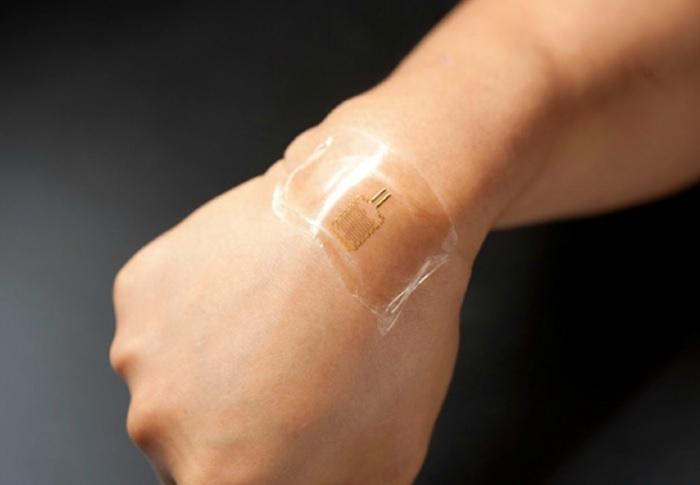
Passwords have and always will be important in this digital age as we aim to protect our identity, information, and personal data. If you’re carrying around a phone that is as free and open with no password protection you’re potentially dealing with some very risky business on a constant basis. Password protection is very necessary in order to prevent our information from falling into the wrong hands.
Password securities on our smartphones are flawed – and likely there will never be a perfect, unhackable solution. However, there are ways that we have been able to improve the amount of security on our phones. We’ve seen PIN numbers (iPhone), a combination of numbers and letters (BlackBerry), path-tracers (Android), and even facial recognition (Samsung). We’ve gone from having basic PIN combinations to going so far as to have this incredible technology recognize us simply by our facial features. However, as incredible as it may be, it’s also a little weird; but not as weird as it’s about to be.
A recent article from The Telegraph suggests that Motorola has new password technology that will end many security issues associated with current password methods: the password tattoo.
First of all, the term ‘password tattoo’ sounds like a strange and perhaps unnerving idea to begin with. Depending on who you’re asking, I’m sure several people would agree. The idea is almost exactly as it sounds: your skin would be branded with “flexible electronic circuits that are attached to the wearer's skin using a rubber stamp”. So, at least you don’t actually have to be branded with a needle and ink, but none-the-less the technology in itself seems a little… what’s a good word for this? Sketchy.
A password tattoo (they refer to this as the ‘Biostamp’) may solve some known issues with older methods like password bypassing and even forgetting your own password (which happens to people more often than you might think – especially with path-tracers) but it also brings up a whole slew of new problems as well.
Namely, and to be somewhat grotesque, people going after that little patch of skin that has your Biostamp attached to it. That’s some Saw-like activity going on there, and nobody wants to be a part of that. And before you say “Who would actually do that?” a perfect example would be that incident from Malaysia where a gang of people actually cut off some guy’s finger in order to bypass a vehicle’s hi-tech security system, which required scanning the fingerprint of the owner in order to gain access to the car.
Scary, creepy, and some people just might do it in order to get certain information. Not to say that it would happen to you, but if this becomes the new “thing” for passwords then it will probably happen to somebody someday. It is something to think about.
However, Motorola’s reasoning for implementing a newer method of password technology actually makes a good bit of sense. As I mentioned previously, if you’re walking around without a password it’s just asking to have your information tampered with should your phone fall into the wrong hands, so why don’t people just add a password? On this one, I have to agree with Motorola’s Regina Dugan: “Authentication is irritating. In fact it’s so irritating only about half the people do it, despite the fact there is a lot of information about you on your smartphone, which makes you far more prone to identity theft.”
Personally, I had to give up using a password on my phone simply because password protection on iOS is not what I would consider “toddler friendly”. Even if you don’t opt to have all information erased from your iPhone within 10 failed attempts, your iPhone will lock up for different increments of time depending on how many failed attempts you try. My son likes to do everything himself at this age; this includes running off with and unlocking my phone so he can watch Curious George on Netflix. Unfortunately, being only 3 years old means he doesn’t quite grasp the concept of PIN codes and that you have to type in a certain sequence every time in order to get in to the phone – not just whatever number looks good. But this doesn’t stop him from trying, and subsequently locks me out of my phone for a good 30 minutes or so before he gives up.
So yes, I’m one of those people that find using a password “irritating” simply because my particular situation makes it harder for me to use the phone in general, although it is nice to know that my phone is, if nothing else, secure. But would I rather have a rubber stamp on me in order to have access to my phone? No, no, and no. Quite frankly, I find the thought of having this Biostamp attached to my skin a little bit creepy (although I find that the term ‘Biostamp’ sounds kind of cool).
But Motorola is apparently prepared and undeterred by people like me. Dugan also mentioned that “… Motorola would not be put off by those who felt that the new technologies were ‘creepy’”. Well, there you have it. It looks like it’s going to happen whether we really want it to or not.
Which brings me to the point where I ask you, dear reader, how you feel about the very possible implementation of this new technology. Could you see yourself using this as a more convenient method of gaining access to your phone, or would you prefer a more traditional method? Share your opinions on this strange and new technology with me in the comments!
Images via Engineering